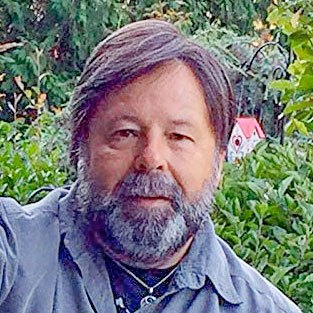It’s not unusual to hear about what should be a non-issue but has become an anti-police and unnecessarily politicized issue oozing out of San Francisco. The Associated Press (AP) reported in the SFGate that the San Francisco Police Union “ordered and distributed… [face] masks emblazoned with [a] black-and-white American flag with a blue stripe across the middle.” This emblem is known as the thin blue line flag. Now, their police chief is banning these face masks.
The thin blue line, in all of its various configurations, has traditionally represented law enforcement officers who stand between civil order and criminal chaos. Placing the thin blue line on various designs or motifs honors cops who place themselves in that precarious position to serve and protect their communities. It’s also used to honor law enforcement officers killed in the line of duty.
The AP reported the “symbol is associated with the Blue Lives Matter movement, a display of unity among police officers in response to the national Black Lives Matter movement.” This correlation may be lazy. Does it imply police and their supporters created the thin blue line in response to Black Lives Matter?
While the Blue Lives Matter movement may have emerged partially in response to the admittedly anti-cop Black Lives Matter movement, the thin blue line motif far predates either group’s formation.
Briefly, to wax historical, according to several online sources, the “thin line” concept originated in the 19th century, during the Crimean war, as “the thin red line.” It represented the sparse British military forces (redcoats) charged with repelling Russian forces, including a cavalry during the Battle of Balaclava. This battle was also the site of the famed “Charge of the Light Brigade.”
In time, the thin red line expanded to represent firefighters and morphed into “the thin blue line” to represent law enforcement officers. Brothersbeforeothers.org reports, “The concept of the ‘The Thin Blue Line’ dates back as far as 1911, when it was used by the US Army, which wore blue uniforms until the end of the 19th Century.” They also write, “The first real usage of the ‘Thin Blue Line’ as it applies to law enforcement didn’t show up until the 1950s.” It was adopted by the Los Angeles Police Department. The thin blue line far predates its association with Blue Lives Matter.
According to an article by Julia Craven in the HuffPost, Black Lives Matter didn’t begin forming until 2013. In 2014, the movement grew in national recognition after a Ferguson, Missouri police officer shot and killed a robbery suspect after he’d attacked that officer. The Obama/Holder Department of Justice (DOJ) cleared the officer of any wrongdoing to the dismay of those who reject or ignore facts. Those who eschew facts are also not too keen on traditional American values.
But traditional American values, like support for law enforcement, are apparently toxic in the City by the Bay. So, even when San Francisco Police Chief Bill Scott concedes “he considers the blue flag and stripe ‘a meaningful expression to honor fallen officers,’” he also waffles, adding, “some may perceive the symbol as ‘divisive and disrespectful.’” Who? Antifa, Black Lives Matter, and other anti-police agitators?
Is the chief really comfortable acceding to people who find a beautiful symbol that honors police officers disrespectful? Can he explain the manner of the disrespect he is alluding to? I’m at a loss as to how the chief is legitimizing his decision to ban a symbol that represents the sacrifice and service cops provide for their communities.
Divisiveness and disrespect is what the police chief has shown his officers. Despite some members of his own command staff asking the police officers’ union for thin blue line mask for themselves, Chief Scott told officers they can no longer don the thin blue line face masks.
According to the AP, Chief Scott has ordered the rank and file to wear neutral masks instead. He attributed the decision to his wish to “defuse a controversy” that was supposedly “sparked” by officers wearing the thin blue line masks at the May Day protest (May 1st is a traditional socialist/communist day of disruption). Once again, when confronted with the dichotomy as to who is responsible for any conflict between the police and protesters, leftist city leaders side with the protesters over the cops.
So, the San Francisco police chief appears to care more about the feelings of socialists, communists, and anarchists than about honoring police officers. So what if anti-police social malcontents don’t like the cops’ masks. Doesn’t banning the masks, as the chief has done, validate the political agitator’s contention that the symbol is somehow “disrespectful”? Does the police chief truly believe leftist protesters need a reason (like a mask they find offensive) to hate the police? No!

Join the Discussion
COMMENTS POLICY: We have no tolerance for messages of violence, racism, vulgarity, obscenity or other such discourteous behavior. Thank you for contributing to a respectful and useful online dialogue.